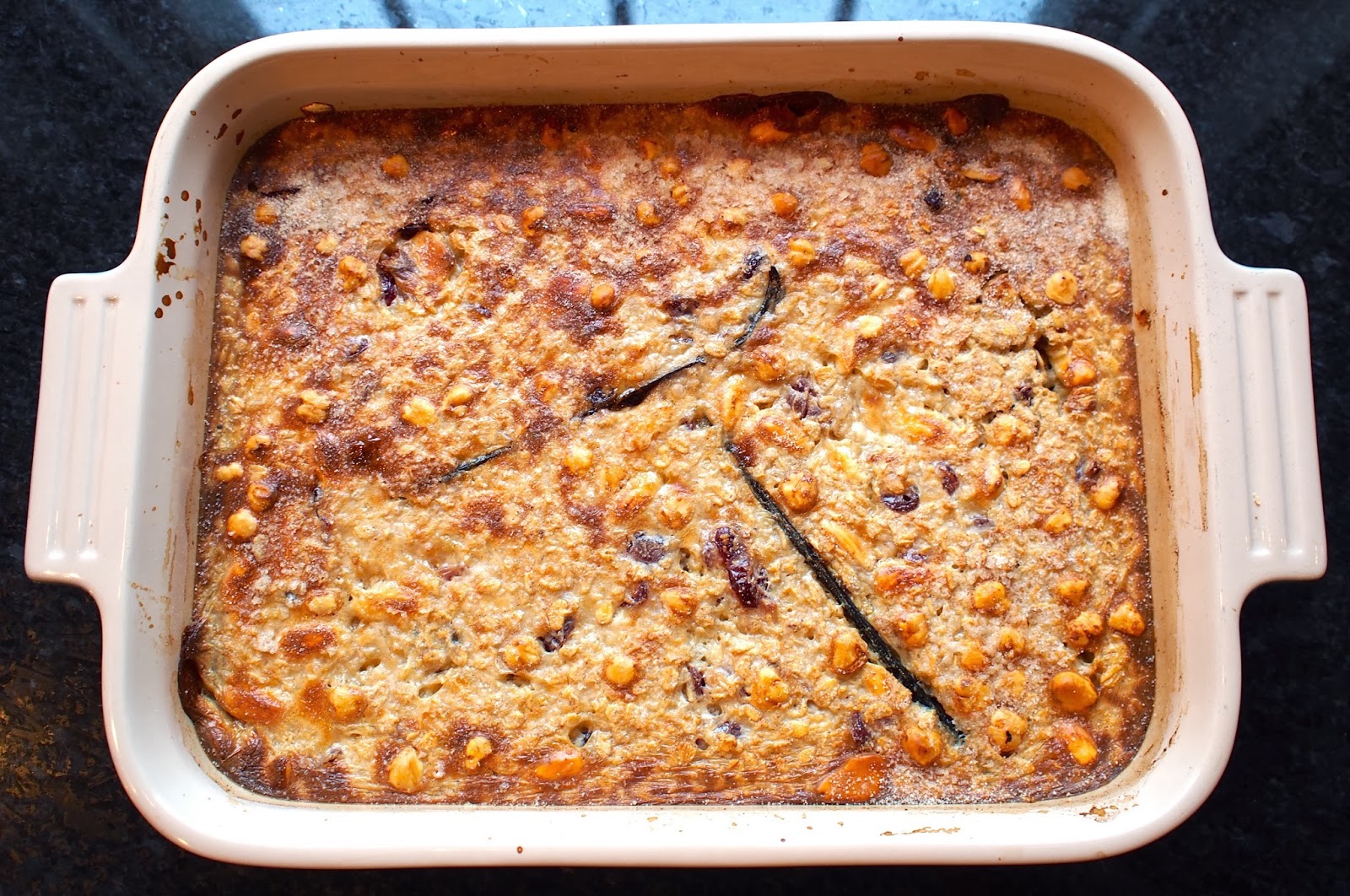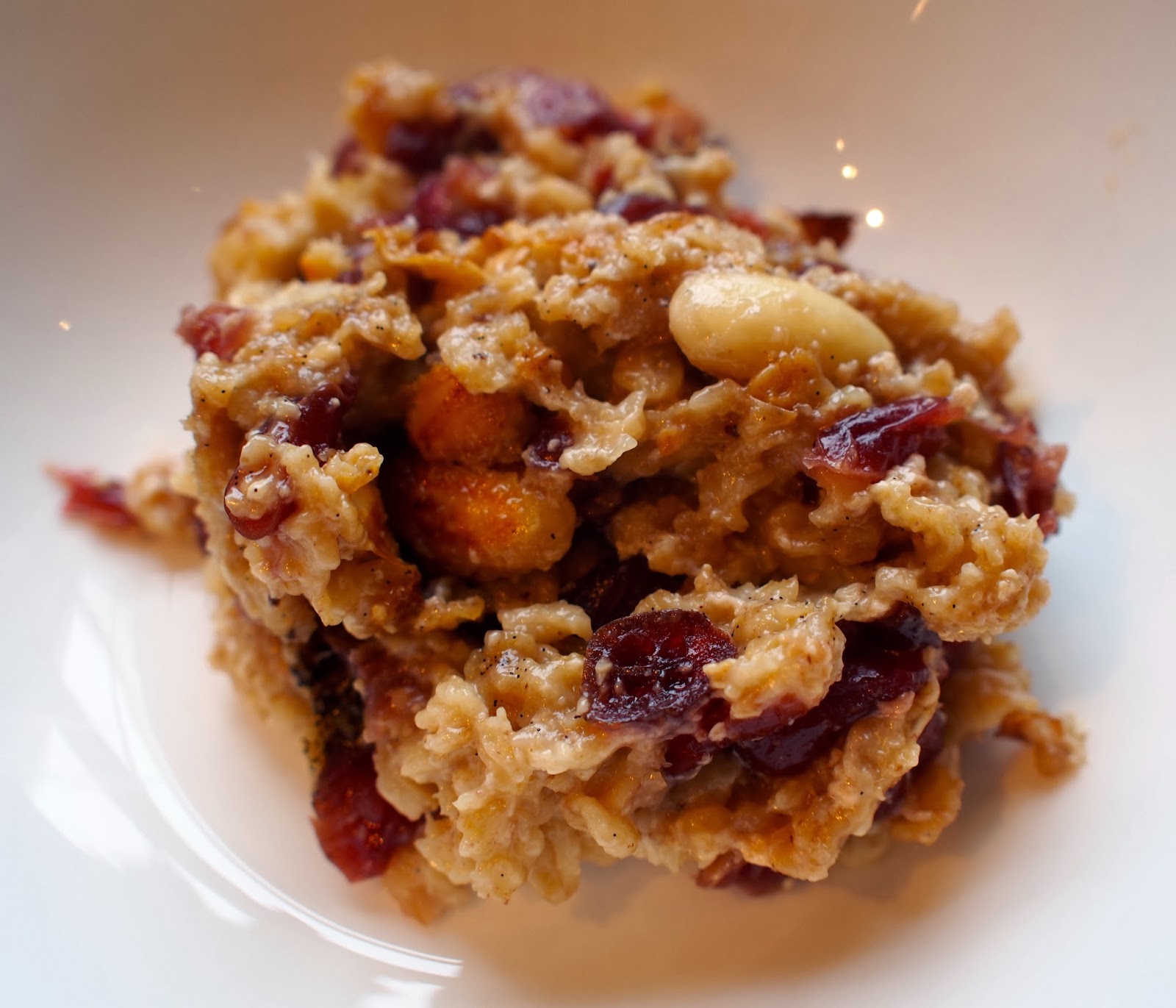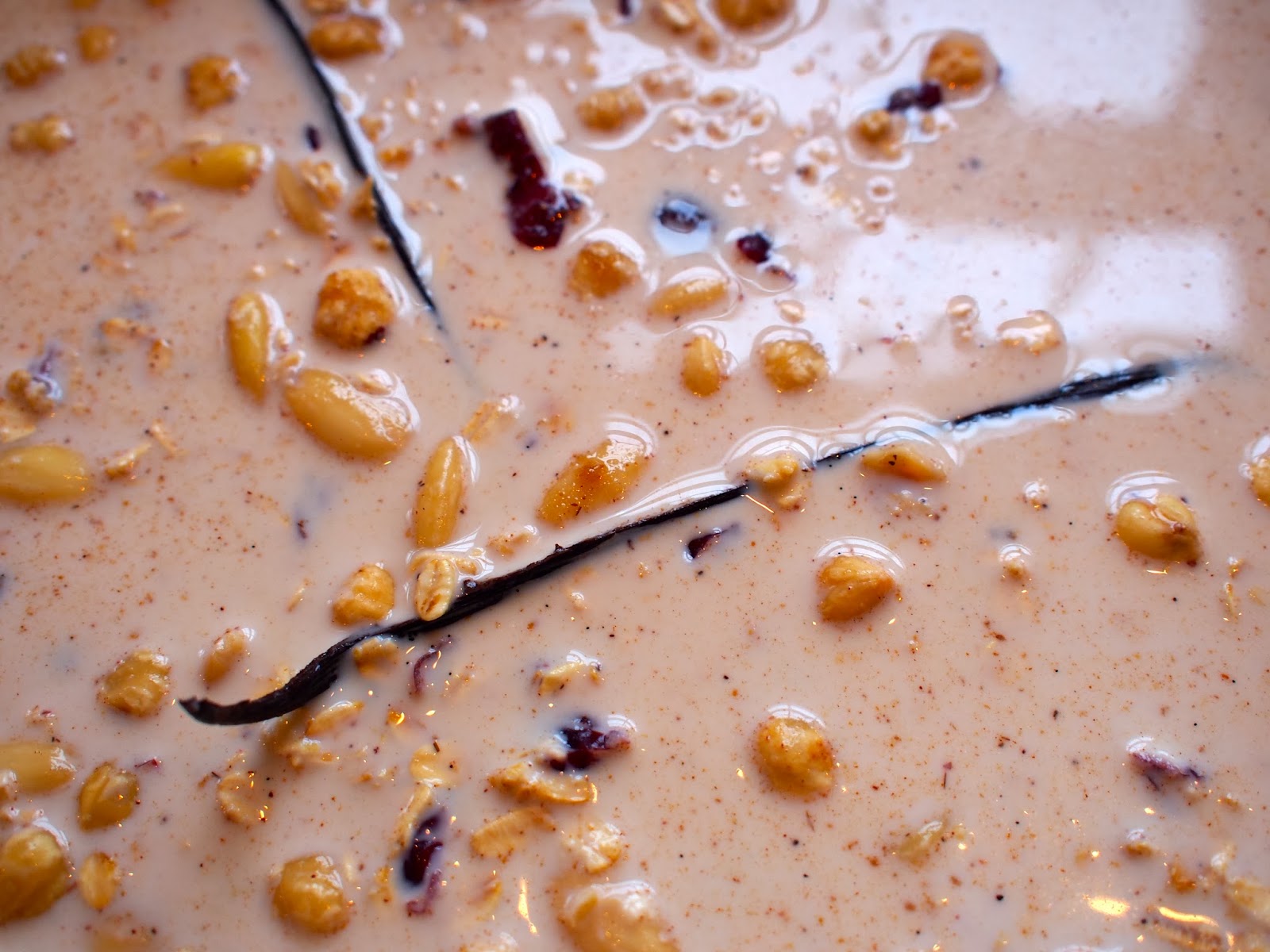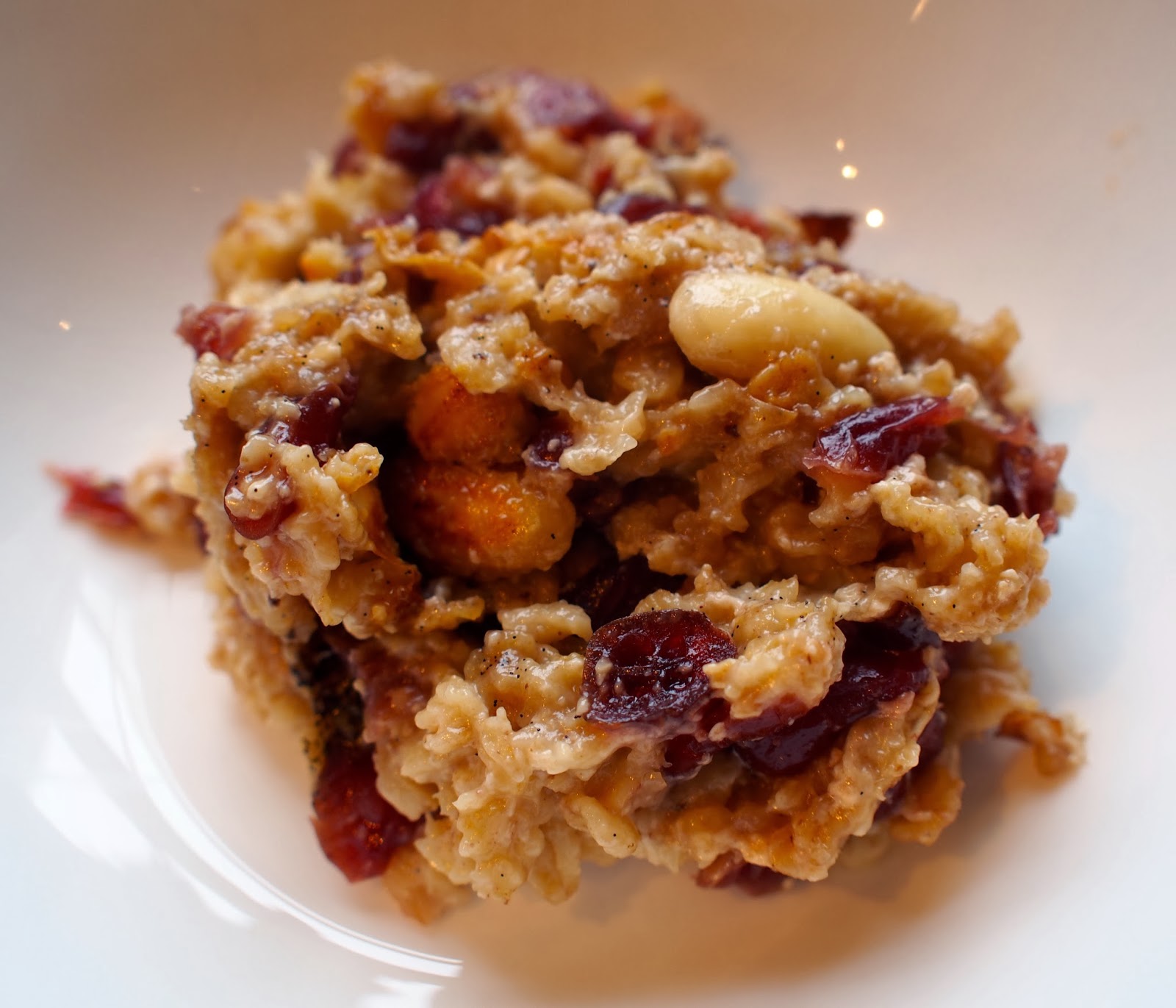My predictable January health kick survives* – we’ve reached the 5th – and although it’s a Sunday morning, I’ve managed to stall breakfast long enough to make baked porridge. I’d caught this recipe earlier in the week on Ramsay’s show, and located the recipe online. I have to say, it’s so much nicer than perhaps it sounds! Forget that oats are a good source of soluble fibre, help reduce cholesterol, and provide an invaluable source of manganese and non-meat protein – this thing tastes yummy too!
Ingredients:
Serves 4–6
150g (5oz) jumbo rolled oats
seeds from 1 vanilla pod
1 tsp ground cinnamon
1⁄2 tsp freshly grated nutmeg, plus a little extra to sprinkle
50g (2oz) whole blanched almonds
50g (2oz) blanched hazelnuts
75g (3oz) raisins
1 ripe pear, peeled, cored and chopped into small chunks
500ml (18fl oz) milk, plus extra for serving
200ml (7fl oz) double cream
2 tbsp demerara sugar
Method:
- Preheat the oven to 180C/Gas 4.
- Combine the oats and vanilla seeds in a mixing bowl – use your fingers to rub the seeds through the oats. Add the spices, nuts, raisins and pear and mix well. Stir in the milk and cream,
- and then pour the mixture into a baking dish. Dust with a little extra grated nutmeg.
- Place in the oven and bake for30–35 minutes, or until the oats are completely softened and the liquid absorbed.
- Heat the grill on its highest setting. Sprinkle the top of the porridge with the sugar and place under the grill for 3–4 minutes, or until the sugar has melted and created a crust.
- Serve warm, with a little extra milk on the side if desired
Notes:
- I omitted the cream from mine, but I used whole milk, and upped it to 600ml
- Do leave your nuts whole if you can, they will soften in the mix
- I used 100g dried cranberries instead of raisins – I’m not that keen on raisins these days
- I forgot to put in the pear – damnation – I have some excellent pears too
- I used my Thiercelin Pain d’Epices spices, because I’m becoming vaguely addicted to the scent – although Hubby did say that it smelled a little like a Christmas pud, so beware
- If you’re not going to pop your vanilla bean pod into sugar, you could put it into the porridge to cook alongside the other ingredients
- Hubby had his porridge without milk on the side, but I did, it’s pretty thick otherwise
- I cooked mine in a Le Creuset dish, which meant that when it cooled down, I was actually able to cut it into strips – like a soft breakfast bar. It’s actually even more delicious cold – that’s my breakfast for tomorrow sorted, with some fresh fruit, and a splodge of natural yoghurt I’ll be good to go…

















































